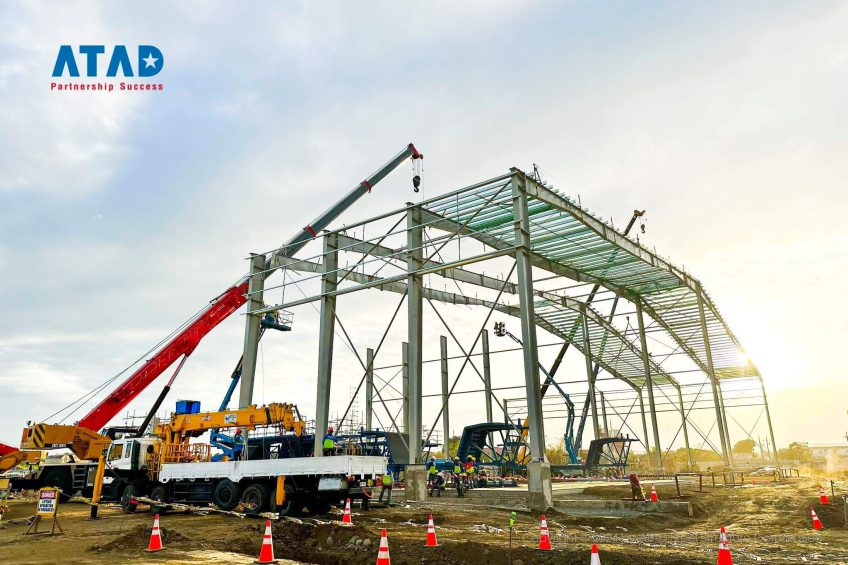Steel structure is an essential part of modern construction projects. With its excellent load-bearing capacity, strength, and high stability, steel structures have been widely utilized in constructing projects like bridges, high-rise buildings, or manufacturing plants.
1. Definition of steel structure
Steel structure is a system of components combined through welding or fastening to create a structural framework, capable of bearing loads and reinforcing other materials like concrete.

South Commuter Railway Project – Philippines
2. Components of steel structure
Steel structure includes the following components:
- I-shaped steel beams, H-shaped beams, U-shaped beams, L-shaped beams, etc.
- Bolts, nuts, screws, etc.
- Steel sheets, steel plates
- Structural accessories: hooks, anchors, tie straps, etc.
3. Steel structure design
Steel structure design involves determining the dimensions and shapes of steel structure components to ensure they have the required load-bearing capacity and stability. This design process should comply with international standards like Eurocode, AISC, or JIS.
4. Steel structure calculation
Steel structure calculation verifies the feasibility of the structural design and determines values of technical parameters such as steel strength, steel beam mass, steel sheet thickness, etc. to ensure that the structure has the necessary load-bearing capacity and stability.
5. Factors influencing steel structure
Steel structures can be influenced by the following factors:
- Loads: structural weight or temporary loads like wind, earthquakes…
- Environment: moisture, rain, wind, salinity, acidity…
- Temperature: high or low temperatures
- Length of steel beams: the longer the beam, the higher the bending capability.
6. Benefits of steel structures
Steel structures offer the following benefits:
- Excellent load-bearing capacity
- High durability
- Easy construction and assembly
- High flexibility in design and construction
7. Lifecycle of steel structures
The lifecycle of steel structures depends on factors such as environment, loading, etc. With proper maintenance and correct usage, steel structures can be used for a long time without damage.
8. Fields of steel structure applications
Steel structures are widely used in the following fields:
- Civil construction: residential buildings, villas, skyscrapers, etc.
- Industrial construction: factories, warehouses, storage yards, etc.
- Transportation infrastructure: bridges, roads, railways, etc.
- Hydraulic engineering: hydroelectric power plants, water storage tunnels, etc.
9. Considerations in steel structure design and calculation
- Select the correct standards and regulations related to steel structure design and calculation.
- Determine the correct loading and other influencing factors for accurate and precise calculations.
- Choose the right type of steel and structural accessories to ensure safety and sustainability of the structure.
- Conduct strict quality checks for structural components before assembly.
- Ensure stability and safety of the structure during construction and usage.
10. Conclusion
Steel structures are an essential part of modern construction projects. Designing and calculating steel structures should follow proper procedures and standards to ensure safety and durability of the project. Contact ATAD – a trusted brand in the steel structure industry.
















